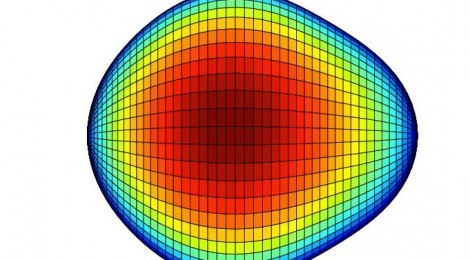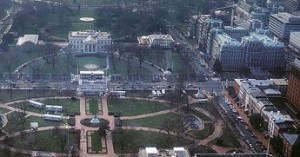
Clustron F*** Press Release
Here’s how Clustron Science Corporation was announced to the world in a press release in August 1992.
But for a little background this all started when I was asked by a journal editor to review under a NON confidential agreement documents made public that described a remarkable experiment. By merely heating a mixture of metal powders intense radiation with a definitive decay curve was made to appear in otherwise non-radioactive material. I cleared permission to repeat the experiment and did so a number of time to convince myself it was all real.
I then sought advice from colleagues in nuclear physics who I thought might be able to explain the totally unexpected experimental results. I was told some sort of quark bag model might do it from a friend who holds the Nobel Prize for discovery of quarks.
My search for any idea of a theory that might fit my data had me end up with Floyd Culler, founder emeritus of the Electric Power Research Institute and before that director of Oakridge National Laboratory. Fred took a liking to me and spent considerable time helping me talk through my experiment and results and the strange story around it all. He told me he knew of a model that might do the trick but the institute and he were sworn to secrecy. He volunteered to tell the man with the theory and secrecy agreement my experimental results.
Two days later my phone rang… please come to Washington DC immediately.
I travelled from California to the East Coast ending up doing an additional proof experiment along the way then ending up in a very prominent lawyers office overlooking the White House with a couple of guys who I thought were friends.
In the company of some very brilliant men my work on cold fusion and this new nuclear process was launched with a totally out of the box model for nuclear physics underpinning my experimental evidence.
CLUSTRON SCIENCES CORPORATION ANNOUNCES BREAKTHROUGH IN NUCLEAR SCIENCE
Corporation to Pursue Commercial Development of Cold Fusion and Closely Related Nuclear and Atomic Phenomena
VIENNA, Va., Aug. 10, 1992 /PRNewswire/ — A new model of the atomic nucleus, which will revolutionize a wide range of energy and materials technologies, has been developed by a United States company.
The new model is based on three different bound clusters of protons and neutrons rather than the traditional separate proton and neutron composition of the atomic nucleus.
Ronald A. Brightsen, chief executive officer, and Russell George, president, today announced the formation of Clustron Sciences Corporation (CSC), headquartered in Vienna. CSC will capitalize on business opportunities in the emerging field of new nuclear science. The company intends to introduce innovative commercial applications in the field of cold fusion and related nuclear and atomic phenomena.
The predecessor of CSC, Nuclear Science Research Corporation (NSRC), developed the unique and comprehensive model of the atomic nucleus that was conceived by Brightsen. The Nucleon Cluster Model (NCM) provides a comprehensive explanation for both nuclear fission and cold fusion. The NCM has produced the first complete explanation for thermal neutron nuclear fission and its experimentally well known characteristics since the discovery of fission in 1939 by Hahn and Strassman. The new framework for nuclear physics, the Nucleon Cluster Model, has led to the development of a systematic and periodic relationship among all known stable isotopes, generically called nuclides.
This accomplishment is analogous to the development in 1869 by Mendeleev in Russia of the Periodic Table of the Elements. The Brightsen NCM Periodic Table of the Beta Stable Nuclides, and the complete explanations for thermal neutron fission characteristics, presents incontrovertible support for CSC’s Nucleon Cluster Model.
Immediately after the announcements in 1989 of cold fusion experiments, Brightsen recognized that his NCM would explain cold fusion. Experimental validation of cold fusion is now in hand and is fully consistent with the NCM. The NCM provides a revolutionary and complete explanation of all observed cold fusion phenomena. It also explains what has not been observed, but which was expected by conventional physics. Cold fusion is rapidly becoming recognized, particularly in Japan, as a potential source of virtually limitless power production. CSC scientists are certain that the NCM explanation of cold fusion will provide a clear path to enhance and control cold fusion power. CSC is seeking worldwide patent protection for its basic concepts and their applications.
CSC will focus on developing commercial technologies aimed at converting radioactive waste to a non-radioactive state; designing advanced materials for manufacture of superconductors; creating superior semiconductor formulas; developing new isotopic materials with useful and unique physical and/or chemical properties; and the developing propulsion devices — all of these can be derived from the NCM.
Clustron Sciences Corporation was created as a new venture by the principals of Nuclear Science Research Corporation (NSRC), Solid State Fusion, Incorporated (SSFI), and Venture America, a technology- oriented venture capital firm in the Washington area. The key founding members of CSC are Brightsen, CEO and chairman of the board; George, president; Dr. Eugene Mallove, executive vice president of research and board member; Jed Rothwell, vice president; and Daniel E. Moore, chief financial officer and board member (a general partner of Venture America).
Brightsen has submitted a scientific paper describing the application of the NCM to the conventional fission processes to the journal Fusion Technology. The paper has already been reviewed and praised by leading experts in the nuclear energy field. Brightsen and Mallove have submitted a scientific paper that describes the NCM’s concise explanation for cold fusion to fusion technology. The paper details the exact manner in which the NCM establishes the unusual phenomena involved in cold fusion.
The NCM model of the atomic nucleus has unlocked a wealth of unexpected explanations for many physical phenomena in addition to cold fusion and nuclear fission.
Clustron Sciences Corporation – Biographical Information
Ronald A. Brightsen, CEO and chairman of the board of CSC was born in New York City and now resides in Reston, Va. He received a bachelor of science degree in chemistry and physics at the University of Michigan (1947) and a master of science degree in nuclear chemistry from MIT (1950). He has been directly involved in the atomic energy field as a scientist and businessman since 1945. During his active career he has participated in every aspect of the atomic energy field, ranging from the applications of radioisotopes; development and testing of nuclear weapons; the development of the Nautilus, the world’s first nuclear powered submarine, at Westinghouse Atomic Power Division; and the development by Westinghouse of the first civilian nuclear power plant at Shippingport, Pa.
Brightsen had been involved in corporate development in the nuclear physics field as an independent consultant and the president of Nuclear Science and Engineering Corporation (NSEC — founded, 1954, Pittsburgh), which he founded with Gordon Dean, chairman of the U.S. Atomic Energy Commission under President Truman. The board of directors included many people prominent in the atomic energy field, including Dr. Glenn T. Seaborg, Nobel prize winner, and Dr. Manson Benedict, who designed the uranium-235 diffusion plants at Oak Ridge, Tenn.
Brightsen was a senior executive with the U.S. Nuclear Regulatory Commission prior to becoming president of Nuclear Science Research Corporation (NSRC). He authored a Fortune magazine article, “How to Save Nuclear Power,” prior to the Kemeny Commission’s report on the Three Mile Island nuclear accident. He has also published scientific articles on the abundances of elements in the universe. While a graduate student at MIT, he was responsible for the discovery of a short-lived product of uranium-235 fission, arsenic-78.
Following the introduction of Russell George, a founder of Solid State Fusion Inc. (SSFI, a company formed to pursue interests in cold fusion), to Brightsen of NSRC by Floyd Culler, president emeritus of The Electric Power Research Institute and former director of Oak Ridge National Laboratory, the decision was made to form Clustron Sciences Corporation.
Russ George, president of CSC and a resident of Palo Alto, Calif., studied biology at the University of Utah and later received a master of science degree equivalence rating in environmental planning from the Ministry of Environment in British Columbia. He has worked extensively in resource development as a planner and manager for the Ministry of Energy, Mines, and Petroleum Resources and the Ministry of the Environment in British Columbia, Canada. He has had an active role in cold fusion via his consulting practice in scientific research, media and management. He began work in cold fusion in 1989 following the Utah announcements and has become well known to researchers in the field around the world as being extremely knowledgeable in the field.
The press release was paired with a Patent Application by R.A. Brightsen, H. Lowenberg, F. Forscher, D.R. George, E.F. Mallove, inventors, “Methods for Manufacturing and Producing Products,” WO94/03906, PCT/US93/07444, International Application Published under the PCT, WIPO, Geneva, 17 February 1994, 20 figs, 31 claims.
The company was supported by a well known Washington Beltway Venture Capital firm and attracted notable dignitaries to its team including Admiral Bud Zumwalt, then President Bush’s Top Science Advisor David Bromley, along with former top men from the US Nuclear Regulatory Commission and Westinghouse Nuclear.
An all-star team, not noted for being dimwitted, and guess what IT JUST WORKED!
Cluster Fuck
However the concept was so highly thought of that a takeover was staged and myself and partner(s) were ousted in the most prejudicial and treacherous manner. Those left behind, all twenty and more years older than I, had the theory but none of the experimentalist know how and the company though initially well funded failed.
Now that I’ve outlived my former “partners” perhaps it’s time to revisit the theory which may, in light of some of the present world news on cold fusion help in the engineering.
